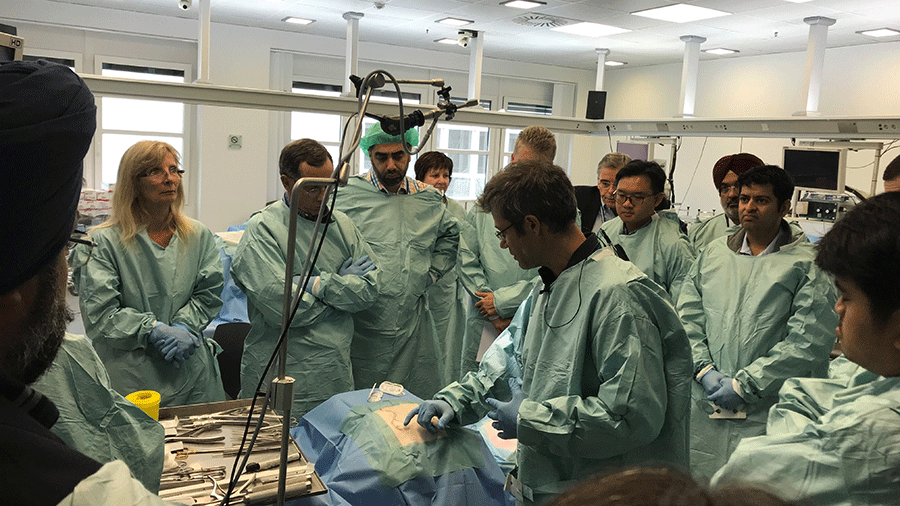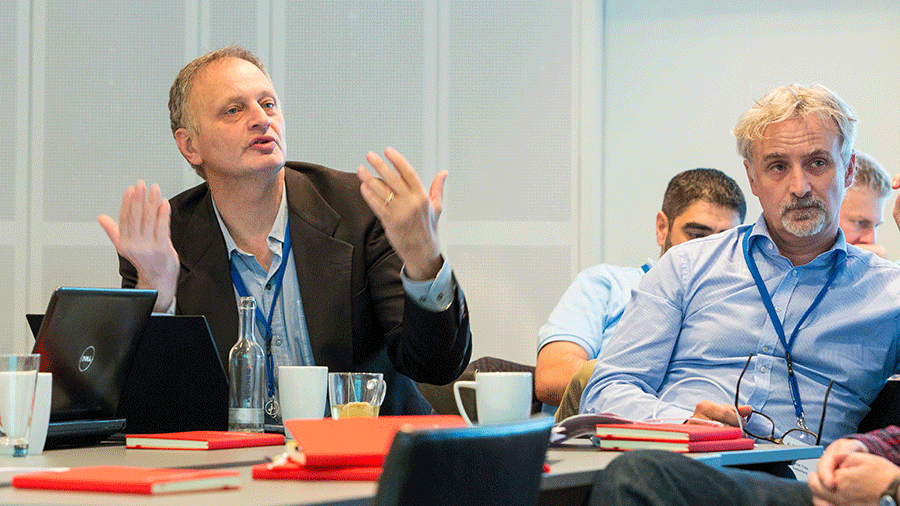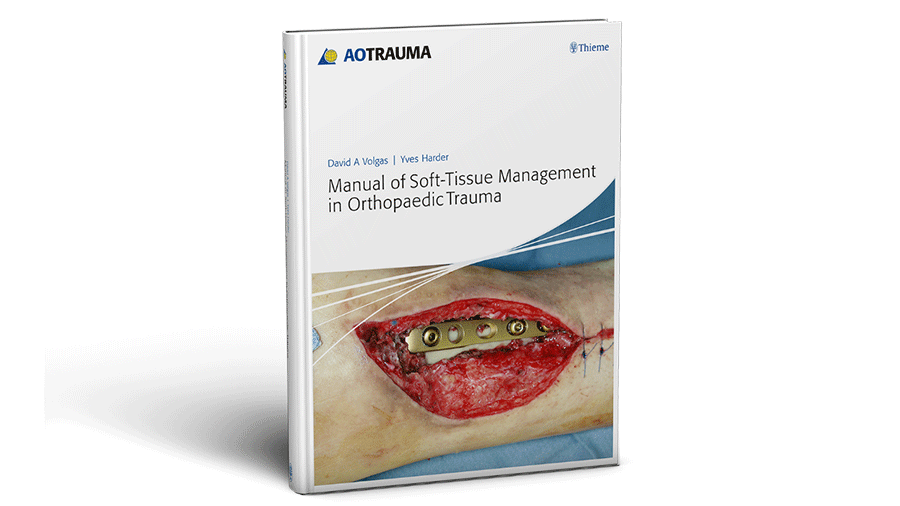Cross-specialty consensus statements in soft-tissue management are another AO achievement in competency-based curricula development

Soft-tissue management (STM) is an essential element in all surgical treatments and the AO—long the standard-bearer for surgical education—has achieved yet another competency-based curricula development milestone and laid the foundation for future soft-tissue management curricula with the recent publication of Generation of Cross-Specialty Consensus Statements on Soft-Tissue Management via a Modified Delphi Method.
The manuscript’s roots reach all the way back to 2012 when, recognizing the important role of STM in orthopedic trauma, the AO published an STM manual (available as an e-book and in hardcover) with a large number of illustrations, videos, and case studies.
In 2017, with an unrestricted education grant from Ethicon, a curriculum development group (CDG) was formed with the goals of leveraging the broad expertise of the AO's diverse orthopedic surgeon community and creating a competency-based curriculum. The curriculum would broadly include topics from surgical preparation (skin preparation, patient positioning, and proper handling of surgical instruments) to wound closure (suture materials, suture techniques, and dead space management) and postoperative care (wound dressing and handling poor scarring). Topics such as the prevention of hematoma, edema, and infection were to be considered at different stages of the surgical process.
First cross-divisional course launched
The CDG comprised experts from various disciplines including orthopedic trauma, neurosurgery, craniomaxillofacial, plastic surgery, and veterinary surgery, and the expectation was that the curriculum could be taught across different orthopedic specialties. In September 2018, as the first cross-divisional course, the AO Course—Fundamentals of Soft-Tissue Management was successfully launched in Hamburg, Germany, followed by a course in Dubai, United Arab Emirates, the same year.
While the courses received generally positive feedback the CDG recognized that several obstacles existed in making the curriculum truly cross-specialty. The first challenge was that, besides plastic surgeons, few soft-tissue management experts existed. Moreover, due to the lack of comprehensive and systematic clinical evidence in certain areas of STM, training in STM was largely tradition-based, with much anecdotal experience being passed on through apprenticeship-type teaching. The latter had become a major challenge in creating unified principles in STM.
Finding common ground in STM
The recently published manuscript details the process of finding common ground in STM that could serve as the basis for future cross-specialty curricula. The CDG employed the Delphi method to define a set of expert-based consensus statements. In addition to CDG members, 22 surgeons from various disciplines closely involved in surgeon education served as panelists. In following the Delphi method, STM statements were generated and the wording refined, evidence was collected, and multiple rounds of surveying and voting by the panelists were conducted. Ultimately, 71 statements were generated and evaluated, and 56 of them reached a level of consensus suitable for future STM education. Those statements are included in the manuscript.
CDG members were Chairperson Damir Matic (AO CMF, Canada), Joseph Cheng (AO Spine, United States), Yves Harder (AO Trauma, Switzerland), Olivier Gauthier (AO VET, France), Salvatore Lettieri (AO CMF, United States), and David Volgas (AO Trauma, United States).
Panelists were Waleed Abdulwahid, Scott Bartlett, Michael Baumgartner, Jean-Philippe Billet, Paul Binhammer, Guido Carabelli, Ricardo Cienfuegos-Monroy, Laurent Guiot, Nitin Kimmatkar, Thiam Chye Lim, Nathaniel Orillaza, Alberto Pereira, Nikolaus Renner, Mahdi Shkoukani, Jerônimo Buzetti Milano, and Atiq Uz Zaman.
The AO Innovation Translation Center (AO ITC) Clinical Evidence center conducted the online survey and statistical analyses.
The manuscript’s roots reach all the way back to 2012 when, recognizing the important role of STM in orthopedic trauma, the AO published an STM manual (available as an e-book and in hardcover) with a large number of illustrations, videos, and case studies.
In 2017, with an unrestricted education grant from Ethicon, a curriculum development group (CDG) was formed with the goals of leveraging the broad expertise of the AO's diverse orthopedic surgeon community and creating a competency-based curriculum. The curriculum would broadly include topics from surgical preparation (skin preparation, patient positioning, and proper handling of surgical instruments) to wound closure (suture materials, suture techniques, and dead space management) and postoperative care (wound dressing and handling poor scarring). Topics such as the prevention of hematoma, edema, and infection were to be considered at different stages of the surgical process.
First cross-divisional course launched
The CDG comprised experts from various disciplines including orthopedic trauma, neurosurgery, craniomaxillofacial, plastic surgery, and veterinary surgery, and the expectation was that the curriculum could be taught across different orthopedic specialties. In September 2018, as the first cross-divisional course, the AO Course—Fundamentals of Soft-Tissue Management was successfully launched in Hamburg, Germany, followed by a course in Dubai, United Arab Emirates, the same year.
While the courses received generally positive feedback the CDG recognized that several obstacles existed in making the curriculum truly cross-specialty. The first challenge was that, besides plastic surgeons, few soft-tissue management experts existed. Moreover, due to the lack of comprehensive and systematic clinical evidence in certain areas of STM, training in STM was largely tradition-based, with much anecdotal experience being passed on through apprenticeship-type teaching. The latter had become a major challenge in creating unified principles in STM.
Finding common ground in STM
The recently published manuscript details the process of finding common ground in STM that could serve as the basis for future cross-specialty curricula. The CDG employed the Delphi method to define a set of expert-based consensus statements. In addition to CDG members, 22 surgeons from various disciplines closely involved in surgeon education served as panelists. In following the Delphi method, STM statements were generated and the wording refined, evidence was collected, and multiple rounds of surveying and voting by the panelists were conducted. Ultimately, 71 statements were generated and evaluated, and 56 of them reached a level of consensus suitable for future STM education. Those statements are included in the manuscript.
CDG members were Chairperson Damir Matic (AO CMF, Canada), Joseph Cheng (AO Spine, United States), Yves Harder (AO Trauma, Switzerland), Olivier Gauthier (AO VET, France), Salvatore Lettieri (AO CMF, United States), and David Volgas (AO Trauma, United States).
Panelists were Waleed Abdulwahid, Scott Bartlett, Michael Baumgartner, Jean-Philippe Billet, Paul Binhammer, Guido Carabelli, Ricardo Cienfuegos-Monroy, Laurent Guiot, Nitin Kimmatkar, Thiam Chye Lim, Nathaniel Orillaza, Alberto Pereira, Nikolaus Renner, Mahdi Shkoukani, Jerônimo Buzetti Milano, and Atiq Uz Zaman.
The AO Innovation Translation Center (AO ITC) Clinical Evidence center conducted the online survey and statistical analyses.



